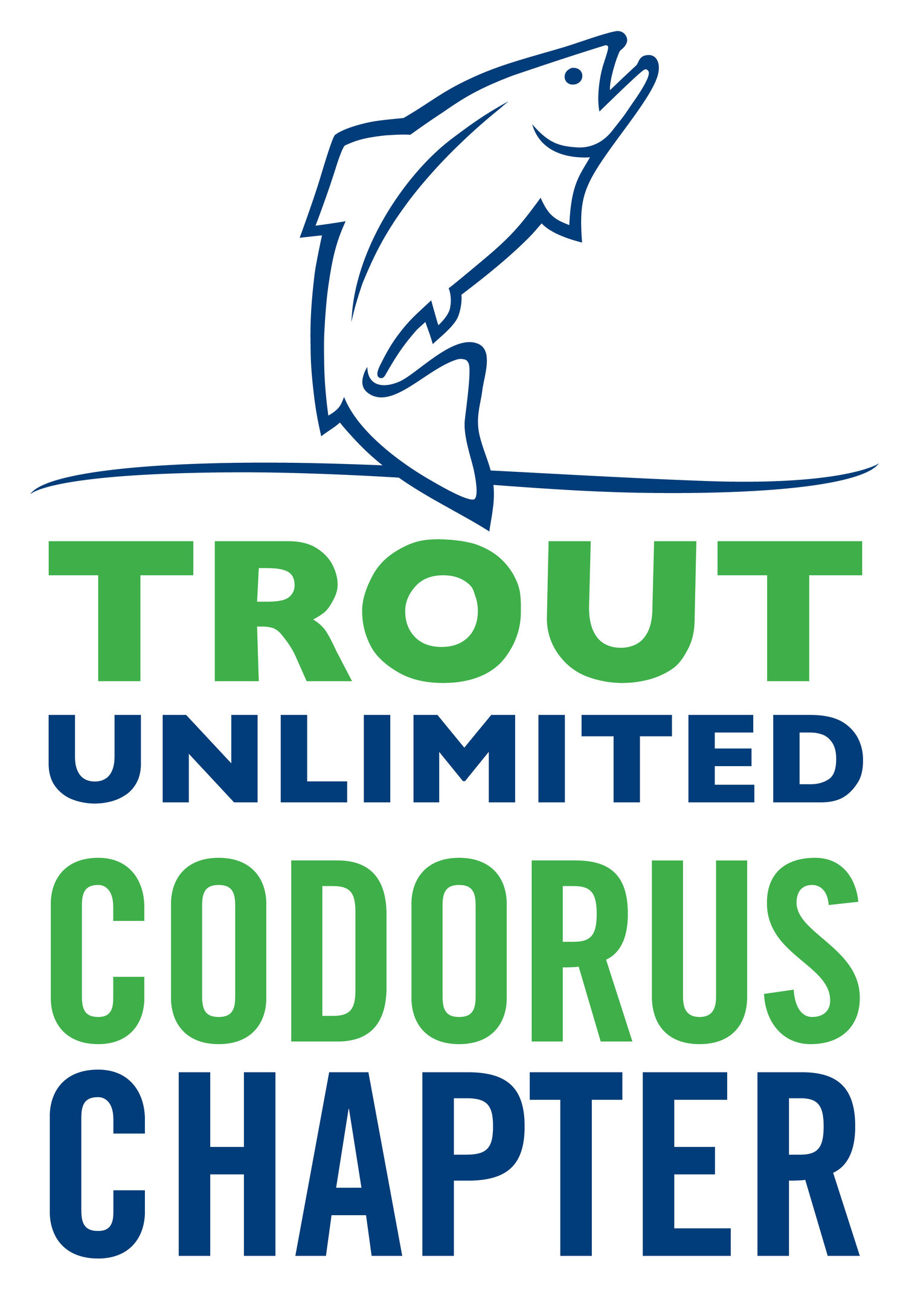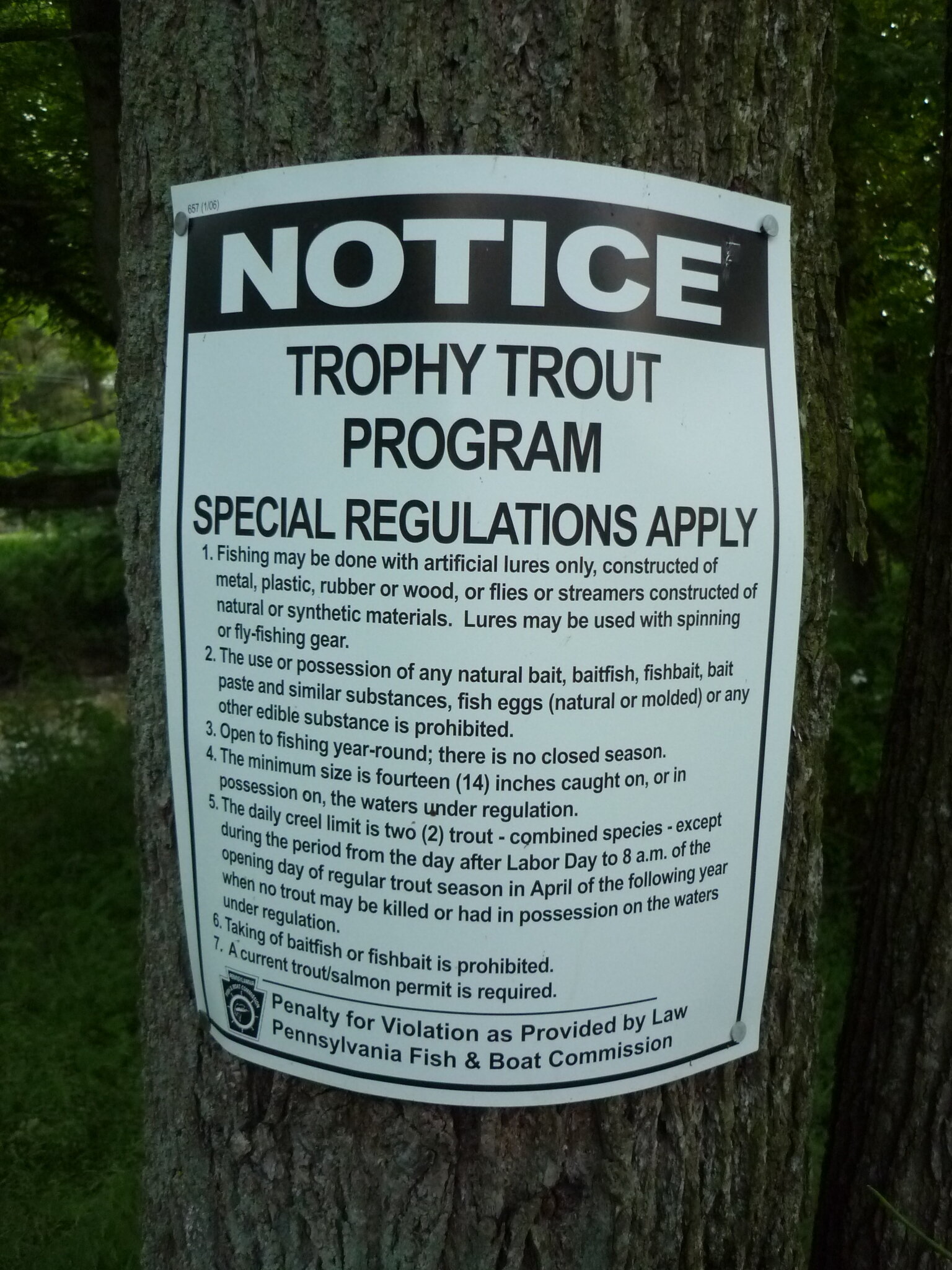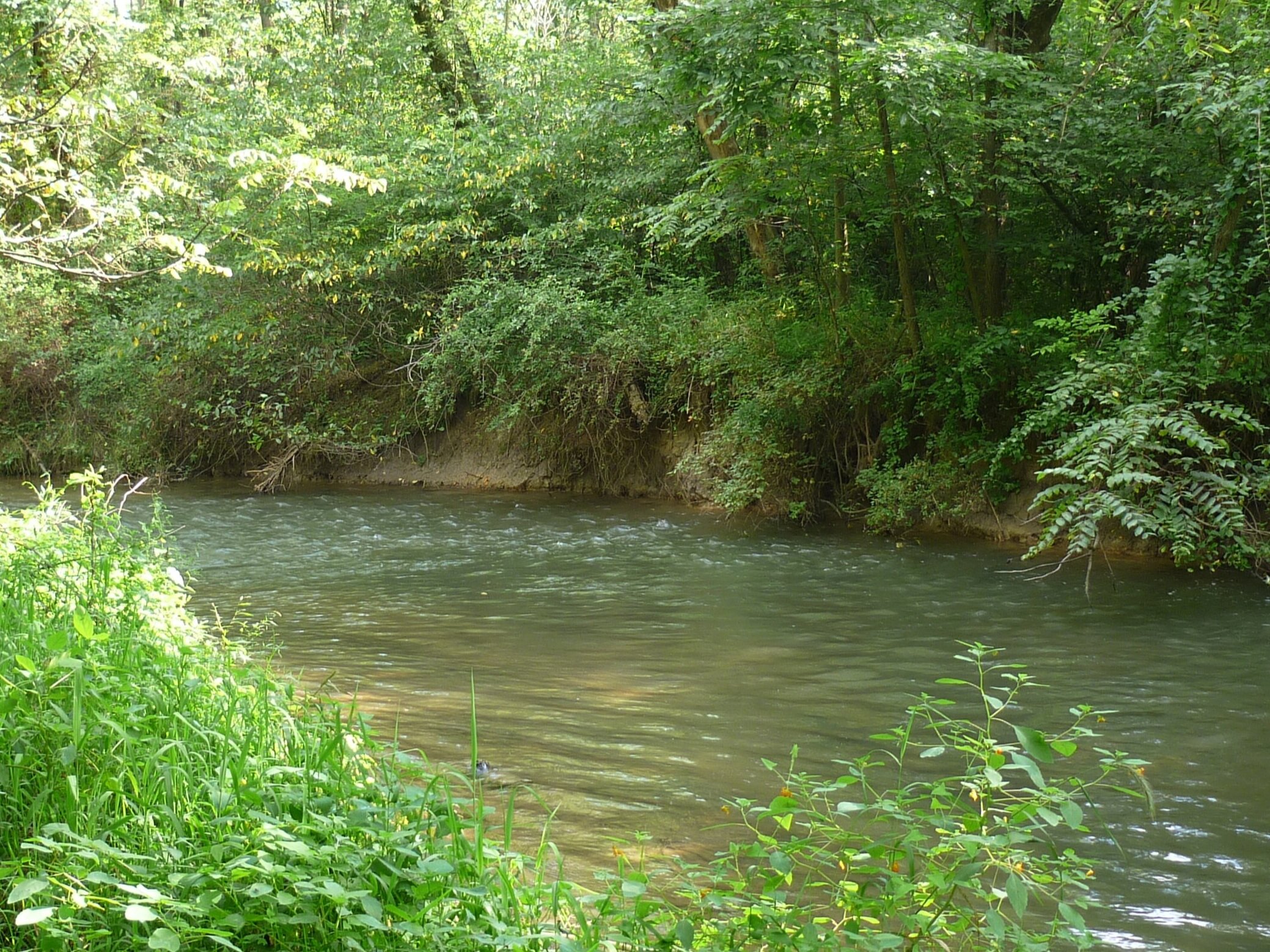A History Of The Codorus Creek Trout Fishery
The Codorus Creek Tailwater
Our ‘home water’ is a very special tailwater trout stream in south-central Pennsylvania called Codorus Creek. In describing it’s emergence as an excellent wild trout fishery, one could easily use the term ‘happy accident’. Once too warm for trout, the creek was transformed in the 1970’s by a project that had little to do with fishing. Back then, a branch within the watershed was impounded, creating a reservoir of process and cooling water for a local paper mill. To regulate the temperature of the water reaching the mill, the dam included release valves that discharged water from deep within the lake, where it was always cold. That cold discharge keeps the creek cool enough for trout for several miles downstream. The reservoir eventually became known as Lake Marburg and, through an agreement with the Commonwealth, the area around the lake went on to become Codorus State Park. Not long after the dam was completed, trout were introduced to the newly-chilled stream with the intention of creating a stocked, put-and-take fishery. However, follow-up surveys to see how those stocked trout were doing revealed something unexpected. Not only were they surviving, but they were thriving and successfully spawning. In the early 1990’s, it was clear that stocking was no longer necessary, as the trout population was easily sustaining itself. The stream was designated as a Class A wild trout stream by the PA Fish and Boat Commission, and a High Quality Cold Water Fishery by the PA DEP. Special fishing regulations have been in place ever since, with the latest version being PA’s Trophy Trout Program. A bit of a misnomer, since the stream doesn’t hold many trout that most would consider a ‘trophy’, the regulations nevertheless restrict the minimum size, quantity and harvest period to promote a healthy breeding population.
be sure to read and understand the rules before you start fishing
a fishy looking riffle that’s a good example of the creek’s productive habitat


